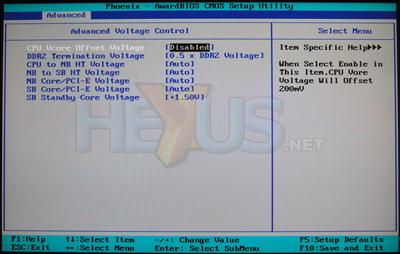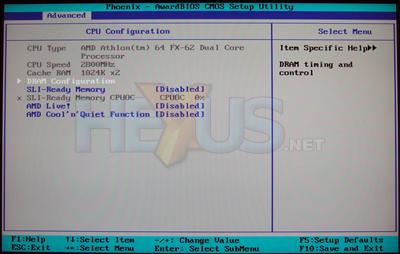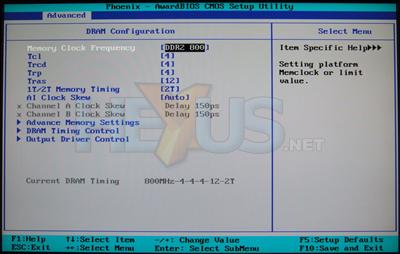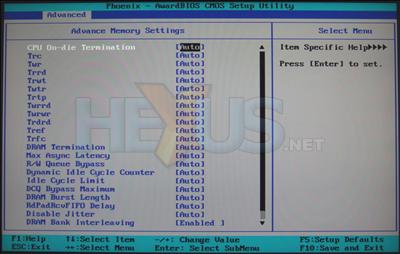M2N32-SLI Deluxe BIOS
On to the BIOS before we have a little play with the microphone and a few other features.
We'll let the pictures do the talking for a moment:
There's more, but you get the idea. The BIOS is extensive, with as much tweakability as the Foxconn Tritium - the NVIDIA reference board for nForce 590 SLI - or ATI's Sturgeon reference board. Here's a low down of key BIOS adjustments:
| Feature | Adjustments |
|---|---|
| HT Reference Clock (CPU-SPP) | 200-425MHz (1MHz increments) |
| HT Reference Clock (SPP-MCP) | 200-400MHz (1MHz increments) |
| CPU FID | x5-CPU MAX. FID (x1 increments) |
| PEG Slot 1 Clock | 100-200MHz (1MHz increments) |
| PEG Slot 2 Clock | 100-200MHz (1MHz increments) |
| HT Multiplier (CPU-SPP) | 1-5x (x1 increments) |
| HT Multiplier (SPP-MCP) | 1-5x (x1 increments) |
| HT Multiplier (MCP-SPP) | 1-5x (x1 increments) |
| Memory Clock | 400/533/667/800MHz |
| CPU Core voltage | 0.800-1.5625v (0.0125v increments) |
| CPU Core voltage offset | +200mv/Disabled |
| Memory VDIMM | 1.800-2.500v (0.025v increments) |
| Memory VTT | 0.5/0.6x VDIMM |
| SPP (NB) Voltage | 1.200-1.400v (0.050v increments) |
| MCP (SB) Voltage | 1.500-1.750v (0.025v increments) |
| HT Voltage (CPU-NB) | 1.200-1.500v (0.025v increments) |
| HT Voltage (NB-SB) | 1.300-1.500v (0.025v increments) |
| MCP (SB) Standby Voltage | 1.50/1.60/1.70v |
With nForce 590 SLI comes support for EPP memory modules. EPP allows extended timing information and sanctioned automatic overclocking, as detailed by Rys in a recent piece.
Using in-built overclocking features, one of several overclocking profiles can be set. There's CPUOC 0% and 10%, within which there are optimal, high performance and high frequency profiles, which alter CPU and memory speeds along with memory timings. The core multiplier is dropped in favour of boosting HTT speed. The maximum HTT overclock we obtained ourselves was 340MHz.
Sound shenanigans
The M2N32-SLI Deluxe comes with an ADI1988B sound chip, which supports DTS Connect, DTS Neo:PC and DTS Interactive. This provides 3D positional audio for 5.1 & 7.1 sources, along with expansion for stereo sources, all of this transmitted digitally using DTS. Be sure to get the latest sound drivers to ensure support for these features. Even with the latest drivers, we found DTS functionality to be buggy. Further, the SoundMax control panel would crash or at times hang the whole system. We've narrowed the problems down to DTS Interactive, so some work on the drivers may still be required.
The bundled Superbeam microphone, when operating in directional array or voice recording mode, made a good effort at cutting out background noise. The sound subsystem itself does a pretty good job, even with a cheap microphone, but the Superbeam mic is definitely better. Voice recording mode only seems to cut out particular background noises, such fan noise. Non-continuous background noise might not get filtered out, but other than that the filtering is rather good.
AMD Live!
With BIOS 0504 or greater, AMD Live! is supported by the board. However, the motherboard manual makes no mention of it, and enabling Live! in the BIOS makes a new device appear for which no drivers are found. An inf file is available online, but no functionality appears to be added when installed.













